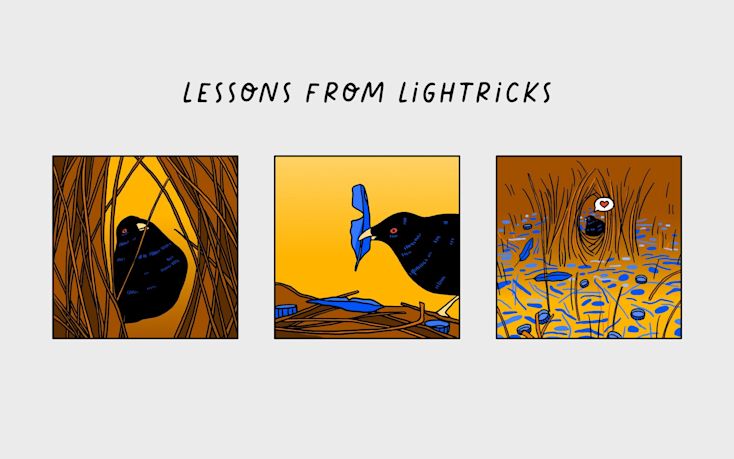How to claim your stake in research

Researchers should focus on the initial buy-in for research, collaborate with stakeholders throughout the research journey, and how findings are shared back with stakeholders. Academy Xi's Eric Lutley posed a bunch of questions to User Research Leader Jess Nichols about how researchers can become stakeholders' trusted advisor.
How to get buy-in and budget for research
I've heard it's hard to get internal buy-in to conduct qualitative research. How do you do it?
Jess: Internal buy-in for research is a marathon, not a sprint. You can't expect your stakeholders to change their perception of research within a short time. I believe you have to show, not say, with research – so definitely ask for forgiveness, not permission, to conduct research.
Firstly, getting that initial buy-in is about showing a quick-win outcome that provides a clear benefit to your stakeholder. I'd suggest using an evaluative methodology, such as running a usability test or a survey to secure buy-in. These approaches are low-effort and are quick to execute, giving you time to craft meaningful and sticky insights to share back with your stakeholders to show the value of research.
Once you have stakeholder interest, guide them through the research journey – from the research plan to execution, to the final reports. Having stakeholders involved in crafting questions, observing sessions, and providing feedback on potential recommendations gives them accountability to the research outcome. It will make them feel like they have skin in the game and help them understand the stages within a research project.
It's also important to positively incentivize research input. Even if a stakeholder shows up to one session, or contributes one question, make sure you recognize their contribution. It will encourage them to continue participating in your research.
Additionally, getting stakeholders to attend the sessions, getting them to write notes, it's the secret sauce, because if they're attending a session and you tell them, "Hey, you need to write notes," they have to listen to the research versus just observing. Even if the insights that they capture are not relevant to what you're doing, the fact that they've listened to that interview will resonate with them in the long term.
Finally, you have to be your own biggest cheerleader. Over-communicate, repeat and share your insights with as many people as you can within your organization. Leverage different communication channels you have – is there a way to share an insight on Slack, or via email or in a meeting?
What happens when you have no budget to conduct research?
Jess: I don't think I've ever been in a situation within my career where I've ever had enough budget for research. I love Marissa Mayer's quote,
Creativity loves constraints.
As a researcher, I find it an exciting challenge to figure out more creative or hacky ways to get to the answers I need with a limited budget. Generally, if you need funding for a research project, it will be either recruiting participants or paying for software subscriptions.
To find participants at a minimal cost, you can leverage existing customer or newsletter databases, post on social media, or join relevant communities or groups. If you have a small budget, you can also consider targeted ads on social media for participants that may fit into the required user type.
You can also consider guerilla research to reach out to people in a public setting - such as a mall or train station – and ask them to participate. However, if you plan on running guerilla research, ensure you're in a location that doesn't ban solicitation.
For software subscriptions, this will depend on the type of methodology you are running. You can generally hack your way around the Google or Microsoft suites to do most things - for example, using a shared Google Slides or Jamboard for co-design.
There is one non-negotiable for budget – incentives. If someone takes the time to participate in research for you or your company's benefit, then you should fairly compensate them for their time. Incentives don't always need to be cash though - you can use vouchers, product discounts, or gift baskets.
There are always trade-offs to consider. A limited budget means less rigor in the research process. Less rigor in research means you may potentially have less accurate data to analyze. However, by providing value to your stakeholders with limited-budget research, you will be able to put yourself into a position to request budget in the long term because you have shown that it's a worthwhile investment.
How to collaborate with stakeholders
To what extent are product managers involved in user research? How should researchers and product managers interact?
Jess: Product managers need to combine the customer insight with the business insight to decide product priorities. Product managers will always talk to customers, but you want to make sure that, as a researcher, you can bring other perspectives and data to the conversation, to decide on product priorities as a team.
The relationship between research and product is the most crucial partnership, and as a researcher, I involve product managers throughout the entire research process. You should train product managers on research techniques, coaching them to capture meaningful insights, and align them with your research goals.
What would you say to engineers who want to start building something while the user research is still underway?
Jess: I would look for ways to work with the timeline, allowing the engineers to build things that aren't influenced by the research outcomes but trying to hold off on making something impacted by the research outcomes. I'll try to work with the engineering manager or the product manager to secure the breathing room to complete the research. Moving forward, I'd build in some contingency time to the research timeline to ensure that you are getting those findings complete before engineering involvement.
One time I ended up writing my research outputs as user stories in Jira. So rather than doing a research report, I wrote the user story so the engineers could quickly get in and prioritize, rather than going through that reporting process.
If a stakeholder comes to you with a requirement, what happens if the research doesn't back them up? How do you convince them it's a bad idea?
Jess: To begin with, I would try to understand why they want to build a particular feature. Using the 'five whys' technique helps get to the root understanding of their decision. It might be that the stakeholder has decided they need to build the feature because there's a customer that's advocating for it. It also means that the end-customer will likely need to justify their need. Having that shared understanding can be crucial. By becoming a trusted advisor with your different stakeholders, you can work with them to figure out the knowledge gaps and find the best solutions to fill them.
There are situations when everyone in the team is in a hurry to get the report or insights. How much time should a researcher spend on analysis, especially in such scenarios?
Jess: There is always going to be tension between balancing rigor in research and sharing research efficiently. Although you may feel pressure to work faster, make sure you're not sacrificing speed for finding the right insights. By keeping your stakeholders updated throughout your research, you can start sharing insights when you begin solidifying them.
When is a good time to start sharing your user research?
Jess: The sooner, the better. You want to avoid a situation where you hide away for weeks (or months!) to come back and have your stakeholders not use your research. Keep your stakeholders updated throughout your research journey. Allow them to provide feedback on potential recommendations or findings to give them accountability to the research outcome, always setting expectations that your results are a work in progress.
Do you incorporate your opinion in your research output?
Jess: When you want to embed yourself in the product team with engineering, product, and design – you need to become the trusted advisor. You want to be the researcher that can capture all of the disparate knowledge floating around an organization. Every organization is full of teams talking to users meaning there is more research to uncover. Being able to come back to a product manager with a point of view is vital for any researcher because it enables the researcher to influence the product in a customer-centric way.
I encourage researchers to ensure their end game expresses a point of view and action items to share with stakeholders. Rather than overwhelming them with a bunch of information, they only need to read a handful of takeaways, giving them the essence of the research.
When presenting the insights and findings to the stakeholders, what evidence do you usually add to the deck?
Jess: There are two ways of presenting research insights: deductive reasoning and inductive reasoning. Deductive reasoning is where you provide the context, justification, then the outcome as the conclusion. Inductive reasoning is when you give the decision upfront, then explain afterward.
Research reports should be presented with inductive reasoning because it offers your perspective as an executive summary. The first thing your stakeholders see is the answer. They don't have to wait for a one-hour presentation to get to those insights. Make sure that your report is easy to digest. Try to avoid rows and rows of text but include three or four insights, maybe a quote or a video. Focus on clearly visualizing your findings so that your stakeholders can understand the message you're trying to share.
Working with stakeholders is a marathon, not a sprint. By taking all of your stakeholders on the journey throughout the full research experience, you can show the value of qualitative research and encourage buy-in for future research investment.

Users report unexpectedly high data usage, especially during streaming sessions.
09:46AM24 Sep, 2024
Users find it hard to navigate from the home page to relevant playlists in the app.
11:32AM9 Mar, 2024
It would be great to have a sleep timer feature, especially for bedtime listening.
15:03PM13 May, 2024
I need better filters to find the songs or artists I’m looking for.
4:46PM15 Feb, 2024Log in or sign up
Get started for free
or
By clicking “Continue with Google / Email” you agree to our User Terms of Service and Privacy Policy


